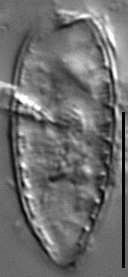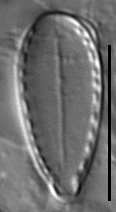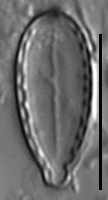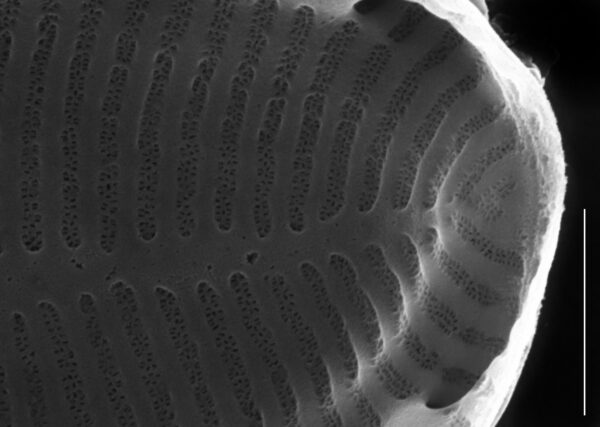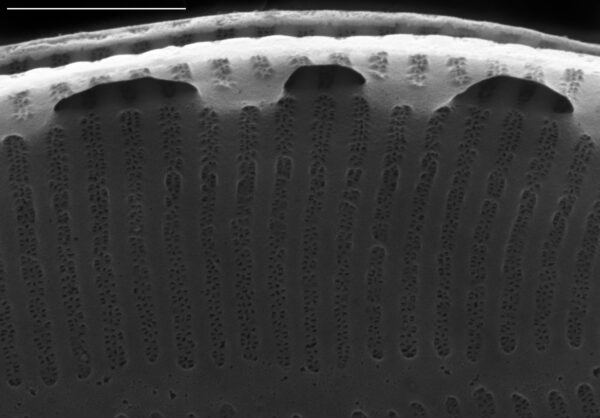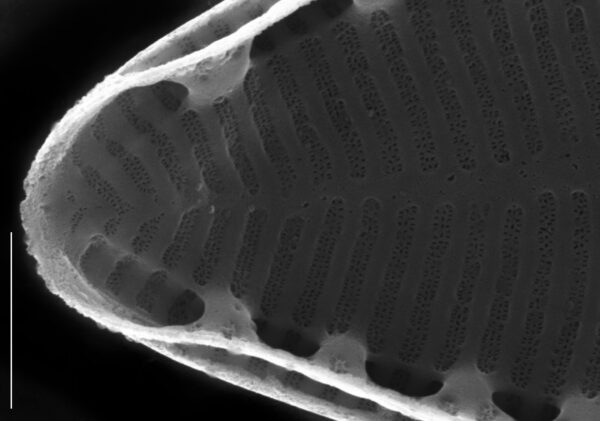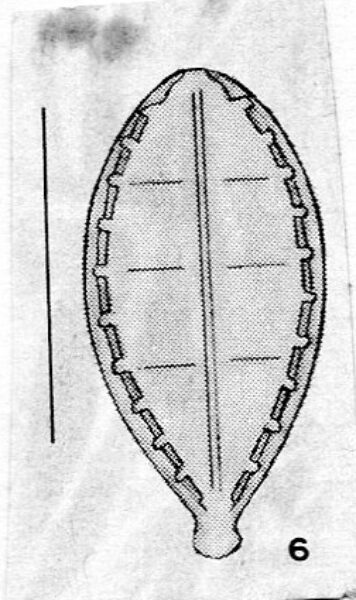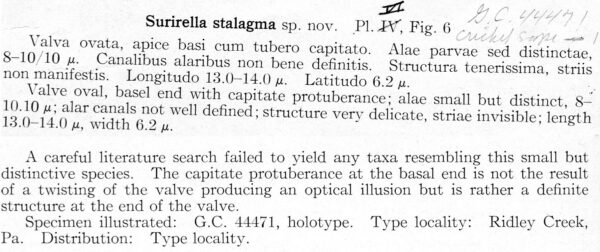Surirella stalagma
-
Category
-
Length Range11-16 µm
-
Width Range5-7 µm
-
Striae in 10 µm55
-
ContributorJonathan English - Feb 2011
-
ReviewerRex Lowe - Mar 2011
Identification
Description
The valves are heteropolar, 11-16 µm long by 5-7 µm wide. The head-pole is broadly rounded while the foot-pole is capitate. The keel is low and is slightly wider than the mantle face. The apical axial line is visible in the LM while the costae are not. In the SEM the the costae have a density of 55 in 10 µm. Between the costae are 2-3 rows of slit-shaped areolae. The extremely abreviated fibulae, in a density of 8-10 in 10 µm, are visible in the LM and arise from 2-4 costae. The portulae have 2-4 costae entering them. The rows of areolae are interrupted between the fibulae before they enter the portulae.
Citations & Links
Links
-
Index Nominum Algarum
-
North American Diatom Ecological DatabaseNADED ID: 65045
Cite This Page
English, J. (2011). Surirella stalagma. In Diatoms of North America. Retrieved November 21, 2024, from https://diatoms.org/species/surirella_stalagma
Responses
The 15 response plots show an environmental variable (x axis) against the relative abundance (y axis) of Surirella stalagma from all the stream reaches where it was present. Note that the relative abundance scale is the same on each plot. Explanation of each environmental variable and units are as follows:
ELEVATION = stream reach elevation (meters)
STRAHLER = distribution plot of the Strahler Stream Order
SLOPE = stream reach gradient (degrees)
W1_HALL = an index that is a measure of streamside (riparian) human activity that ranges from 0 - 10, with a value of 0 indicating of minimal disturbance to a value of 10 indicating severe disturbance.
PHSTVL = pH measured in a sealed syringe sample (pH units)
log_COND = log concentration of specific conductivity (µS/cm)
log_PTL = log concentration of total phosphorus (µg/L)
log_NO3 = log concentration of nitrate (µeq/L)
log_DOC = log concentration of dissolved organic carbon (mg/L)
log_SIO2 = log concentration of silicon (mg/L)
log_NA = log concentration of sodium (µeq/L)
log_HCO3 = log concentration of the bicarbonate ion (µeq/L)
EMBED = percent of the stream substrate that is embedded by sand and fine sediment
log_TURBIDITY = log of turbidity, a measure of cloudiness of water, in nephelometric turbidity units (NTU).
DISTOT = an index of total human disturbance in the watershed that ranges from 1 - 100, with a value of 0 indicating of minimal disturbance to a value of 100 indicating severe disturbance.
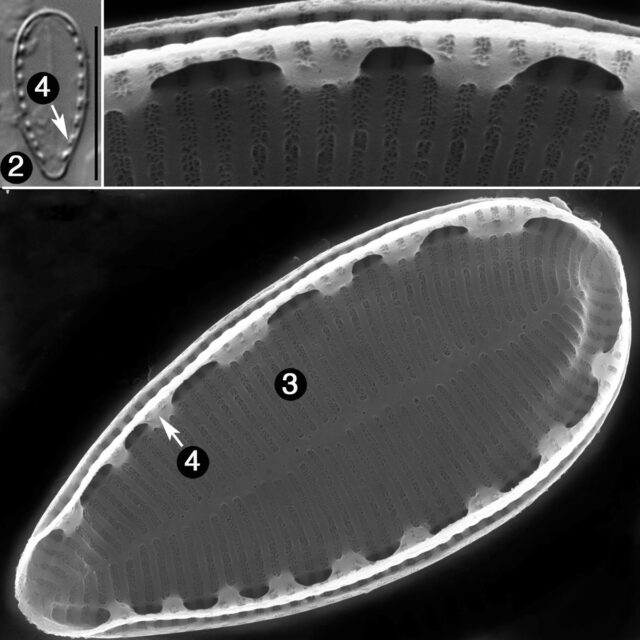
Surirella stalagma
- Valves small
- Valves heteropolar
- Costae not visible in LM
- Fibulae short, wide
- Low keel, wider than the mantle
Valves are small and heteropolar, 11-16 µm long by 5-7 µm wide. The foot-pole is capitate, while the head-pole is rounded. The costae are numerous, 55 in 10 µm, so they are only visible in SEM. The fibulae are short and wide, with a density of 8-10 in 10 µm. The keel is low, and broad compared the the mantle.
 Diatoms of North America
Diatoms of North America